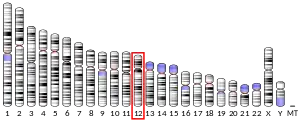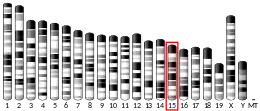| DIP2B | |||||||||||||||||||||||||||||||||||||||||||||||||||
|---|---|---|---|---|---|---|---|---|---|---|---|---|---|---|---|---|---|---|---|---|---|---|---|---|---|---|---|---|---|---|---|---|---|---|---|---|---|---|---|---|---|---|---|---|---|---|---|---|---|---|---|
| Identifiers | |||||||||||||||||||||||||||||||||||||||||||||||||||
| Aliases | DIP2B, disco interacting protein 2 homolog B | ||||||||||||||||||||||||||||||||||||||||||||||||||
| External IDs | OMIM: 611379 MGI: 2145977 HomoloGene: 72227 GeneCards: DIP2B | ||||||||||||||||||||||||||||||||||||||||||||||||||
| |||||||||||||||||||||||||||||||||||||||||||||||||||
| |||||||||||||||||||||||||||||||||||||||||||||||||||
| |||||||||||||||||||||||||||||||||||||||||||||||||||
| |||||||||||||||||||||||||||||||||||||||||||||||||||
| |||||||||||||||||||||||||||||||||||||||||||||||||||
| Wikidata | |||||||||||||||||||||||||||||||||||||||||||||||||||
| |||||||||||||||||||||||||||||||||||||||||||||||||||
DIP2 disco-interacting protein 2 homolog B (Drosophila) is a protein that in humans is encoded by the DIP2B gene.[5] A member of the disco-interacting protein homolog 2 protein family, it contains a binding site for the transcriptional regulator DNA methyltransferase 1 associated protein 1, as well as AMP-binding sites. The presence of these sites suggests that DIP2B may participate in DNA methylation. This gene is located near a folate-sensitive fragile site.[5][6]
References
- 1 2 3 GRCh38: Ensembl release 89: ENSG00000066084 - Ensembl, May 2017
- 1 2 3 GRCm38: Ensembl release 89: ENSMUSG00000023026 - Ensembl, May 2017
- ↑ "Human PubMed Reference:". National Center for Biotechnology Information, U.S. National Library of Medicine.
- ↑ "Mouse PubMed Reference:". National Center for Biotechnology Information, U.S. National Library of Medicine.
- 1 2 "DIP2 disco-interacting protein 2 homolog B (Drosophila)". Retrieved 2011-12-05.
- ↑ Winnepenninckx, B.; Debacker, K.; Ramsay, J.; Smeets, D.; Smits, A.; Fitzpatrick, D. R.; Kooy, R. F. (2007). "CGG-Repeat Expansion in the DIP2B Gene is Associated with the Fragile Site FRA12A on Chromosome 12q13.1". The American Journal of Human Genetics. 80 (2): 221–231. doi:10.1086/510800. PMC 1785358. PMID 17236128.
Further reading
- Houlston, R. S.; Cheadle, J.; Dobbins, S. E.; Tenesa, A.; Jones, A. M.; Howarth, K.; Spain, S. L.; Broderick, P.; Domingo, E.; Farrington, S.; Prendergast, J. G. D.; Pittman, A. M.; Theodoratou, E.; Smith, C. G.; Olver, B.; Walther, A.; Barnetson, R. A.; Churchman, M.; Jaeger, E. E. M.; Penegar, S.; Barclay, E.; Martin, L.; Gorman, M.; Mager, R.; Johnstone, E.; Midgley, R.; Niittymäki, I.; Tuupanen, S.; Colley, J.; Idziaszczyk, S. (2010). "Meta-analysis of three genome-wide association studies identifies susceptibility loci for colorectal cancer at 1q41, 3q26.2, 12q13.13 and 20q13.33". Nature Genetics. 42 (11): 973–977. doi:10.1038/ng.670. PMC 5098601. PMID 20972440.
This article is issued from Wikipedia. The text is licensed under Creative Commons - Attribution - Sharealike. Additional terms may apply for the media files.



